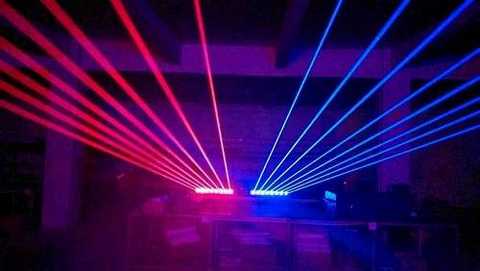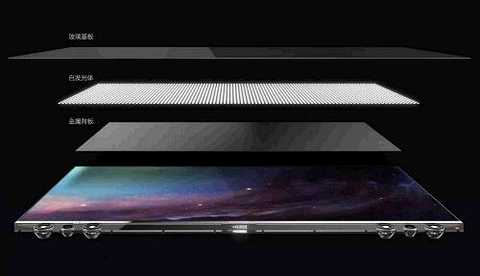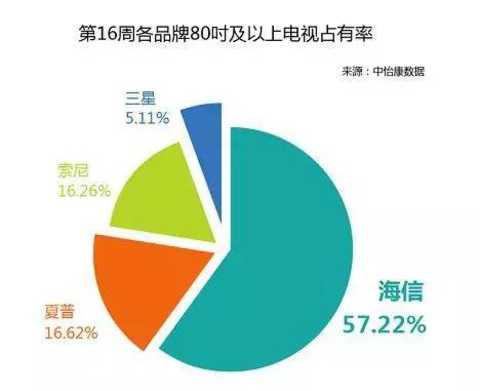This article was first published on WeChat public number: Niu Technology. The content of the article belongs to the author's personal opinion and does not represent the position of Hexun.com. Investors should act accordingly, at their own risk.
The emergence of smart TV has given the whole TV industry a new vitality. After the plasma and LCD TVs, the TV industry now stands at the fork, quantum dot orOLED? Major TV brands including Samsung, Sony, LG and domestic TCL, Skyworth, Hisense have already had their own choices. And suddenly the laser TV that was shot halfway, let this pattern start to make subtle changes...
|
Originally, Hisense and Changhong both pushed laser TV in the past two years, but they did not attract enough attention. Recently, Xiaomi will release a new product on June 28, almost confirmed to be a laser TV. The price is only 1/6 of Hisense and Changhong Laser TV. Because Xiaomi itself comes with a hot spot, laser TV has begun to trigger more people's curiosity.
Laser TV is not just a projector
To be precise, the current market should be laser projection TV. As the name implies, this is also a kind of projection. But it is different from the projection equipment we usually see in university teachers or conference rooms. Laser TV is a short-range and large-size image projection device based on ultra-short-focus projection technology and laser light source technology, and it is also equipped with a set of audio equipment.
Laser TV should be a complete audio-visual entertainment facility for families, including ultra-short-throw projection, projection screens and audio equipment. The general projector uses a xenon lamp as a light source, and people who have experienced it can deeply understand the drawbacks of low brightness of the picture, which is why the teacher usually turns off the lights and pulls the curtains.
Laser TV has obvious advantages on large screen TVs
The reason why laser TV can become a TV, the laser used as a light source greatly enhances the brightness of the screen. In theory, the laser monochromaticity is very good, can restore more realistic colors, NTSC color gamut can reach up to 110%, better than OLED screen. At the same time, the laser TV also has ultra-low power consumption, and the lifespan is much longer than that of the ordinary projection, which is longer than the average TV life.
|
In addition, compared to the ordinary projection, it is necessary to adjust a certain distance and fix it when projecting the ideal screen size, and it is troublesome to install. With the characteristics of ultra-short-throw projection, the laser TV has a transmittance of less than 0.25, and can display more than 100 ç”»é¢ at a distance of about half a meter, which is more convenient for ordinary TV use scenarios.
The most important thing is that in the large-size TV field, the cost of LCD or OLED TV is very high. The price of Sony's 100-inch LCD TV is as high as 500,000 RMB, and the price of LeTV's 120-inch LCD TV is as high as 49.99 million. The latest OLED TV 77-inch price of nearly 200,000 yuan, and Hisense, Changhong laser TV 100-inch or more are priced at 50,000 yuan, the price can be imagined.
|
However, compared with the current mainstream OLED and quantum dot display technology, laser TV still has obvious shortcomings. The OLED is self-illuminating, exhibits a more pure black color, has almost no light leakage problems, and is also superior in response speed. Laser TV is a projection after all. If it is on the same size screen, the display effect of the screen is still weak. The biggest problem with OLED TVs is the cost, which is much higher than that of ordinary LCD TVs, not to mention the large-screen TVs above 100 baht.
Quantum dot TV is actually a kind of LCD TV. Thanks to the use of a quantum dot material backlight, the color gamut performance is greatly improved and the color performance is even better. Coupled with today's HDR technology, its actual effect is getting closer to OLED. In the field of giant screen TV, the price is still comparable to the price of a luxury car.
In fact, it is not difficult to find that laser TV and quantum dot, OLED TV really compete in the field of large screen TV, and in general household size TV, laser TV is completely out of proportion compared with quantum dot or OLED TV, even at the price It is not necessarily cheap. This is also the reason why laser TV is mainly targeting the TV market of more than 100 inches.
|
Today, the most active promotion of laser TV is Hisense, which is the first in China to launch a 4K laser TV, which finally solves the problem of 100å‹ with 1080P resolution. According to the monitoring data of Zhongyikang, Hisense has occupied more than half of the market share of TVs with 80å‹ and above. It is worth noting that Hisense is still a supporter of Quantum Dot TV, focusing on quantum dot TV in small and medium size, while laser TV is responsible for oversized TVs of more than 100 inches.
Fourth generation display technology VS quantum dots, OLED
Laser TV is known as the fourth-generation display technology, which overcomes many of the drawbacks of traditional projectors. However, as a combination of laser light source technology and ultra-short-focus projection, the cost of laser TV is not low, and it is not wise to use it in small and medium size. . However, TV screens that rise above 100 , are much cheaper than LCDs and OLEDs. For LCD TVs and OLED TVs, the larger the screen size, the more difficult the cutting process, the higher the cost, so that the current large screen TV is still a high price, and only the local tyrant of Wang will consider it.
|
For the average home or business, if you need a large screen TV, compared to the three display technologies and product status, laser TV is definitely the most suitable choice. As for small and medium-sized TVs, laser TVs pose no threat to quantum dots and OLED TVs. However, if technology upgrades in the future, quantum dots and OLED TVs can control costs on large-size panels, and perhaps restore the large-screen TV market.
DELIN HAIR COSMETICS , https://www.hairdyecolorfactory.com




